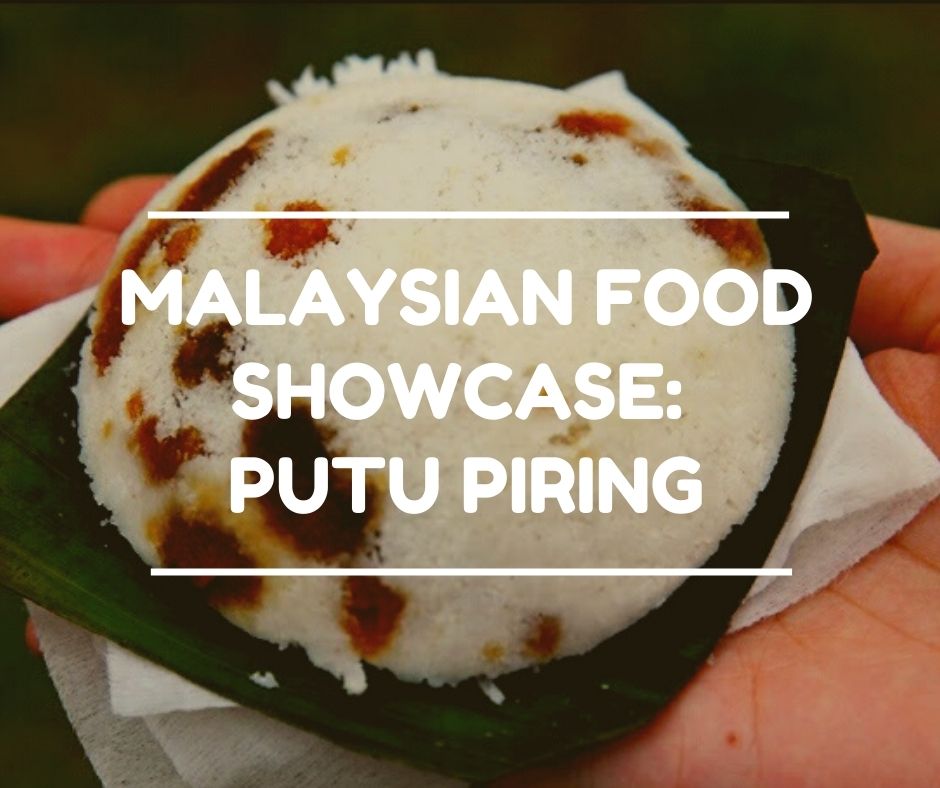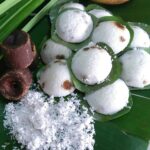Putu Piring: A Traditional Steamed Rice Cake from Malaysia
Putu Piring is a traditional dessert that is closely related to Malaysia. It is basically a steamed rice cake, filled with palm sugar on the inside, and garnished with grated coconut.
Putu Piring is believed to be the Malay adaptation of South Indian delicacies like Puttu and Tekeli Pitha. The name itself reflects the ingredients and shape of this dessert. “Putu” originates from the Tamil word “Puttu,” meaning “portioned” or food made from flour or rice. “Piring” is a Malay word for a saucer or tiny plate, referring to the dessert’s round shape.
Traditionally, Putu Piring was formed without the use of a mould. Instead, skilled hands would shape the mixture by pressing it between their palms before steaming. Nowadays, a round metal mould is commonly used for convenience.
The process of making Putu Piring is quite meticulous yet straightforward. Ground rice flour is first pre-toasted on a skillet or pan until it releases some aroma. It is then mixed with some oil and some salted water, flavoured with pandanus leaves (sometimes lemongrass or vanilla essence is used too). This step turns the rice flour crumbly and mouldable. Next, the rice flour mixture is sieved and tightly packed onto a round mould. Some chopped up palm sugar is then added to the center of the rice cake as filling. Then, some more rice flour mixture is added in to cover up the palm sugar. The rice cake at this stage is ready to be steamed, either together with the mould, or taken out from the mould first.
Once steamed, the Putu Piring becomes delicate, soft and moist. It is often placed on a banana leaf and garnished with freshly grated coconut before serving. Putu Piring is enjoyed during tea time or as a snack. It can be easily found at roadside stalls, Ramadhan bazaar and night markets, usually freshly made on the spot by the vendors. Sometimes, Putu Piring vendors are selling it straight from their motorcycle which has a huge steamer at the back.
Putu Piring and desserts made using similar techniques are also quite popular in other Southeast Asian countries like Singapore, Indonesia, and Thailand. They might have a slightly different recipes and be called different names like Putu Mangkok, Aseupan, Kueh Tutu, or Kue Putu Ayu.




